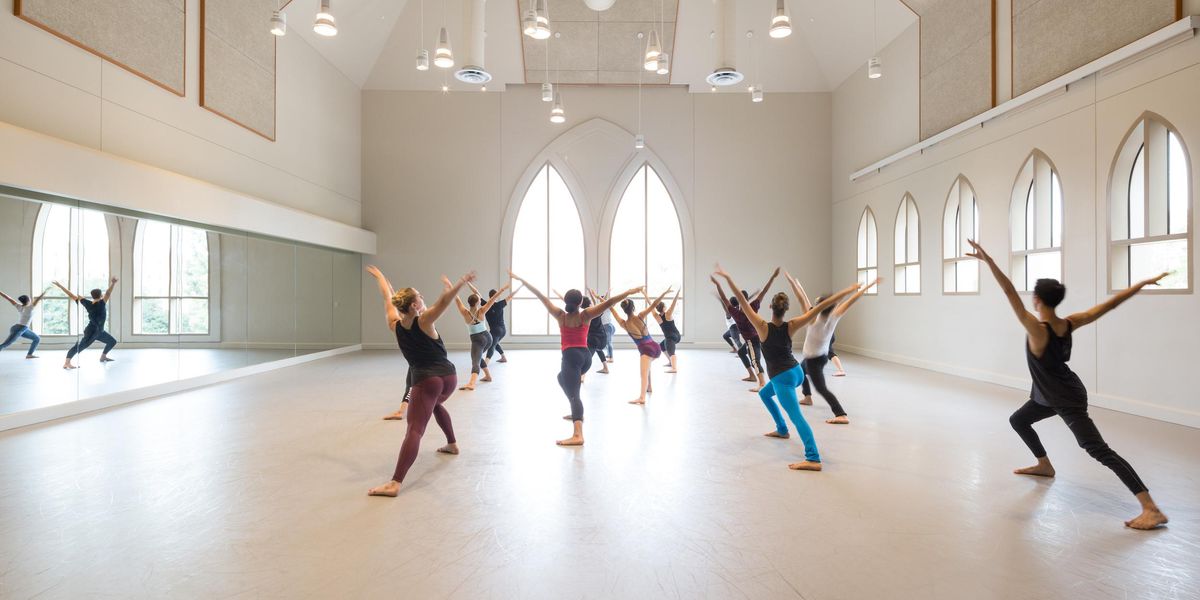Rant & Rave: When Reviving Becomes Revising
The Green Table can be diminished in generations of restaging.
Christian Holder in
The Green Table, with Jooss
Courtesy Holder
Many older dancers who worked with Kurt Jooss on his 1932 masterpiece, The Green Table, myself included, have determined never to see this ballet again: The experience is too painful. It is not easy to watch the gradual sterilization of a work that one reveres, and so, after much thought, I felt I should share what I, and others, have experienced and observed.
The Green Table,
with the subtitle “a Danse Macabre in Eight Scenes, Created Between Two Wars as a Memorial for the Unknown,” entered the Joffrey Ballet repertory in 1967. I inherited the leading role of Death from one of its greatest interpreters, Maximiliano Zomosa, in 1968, when I was 19. I then worked closely with Jooss from 1971 until his death in 1979. Until the 1970s there had been a consistent through-line for the many productions of this masterpiece. Then, bit by bit, the alterations began.
Death’s signature scythe motion, where the arms used to cut across the body laterally, now traces a sharp diagonal line. This does not make sense, because when one uses a scythe, the motion of cutting is a lateral one. Jooss knew this when he created this motif for his Grim Reaper.
There was also the contrast of the arms employing legato movement, while the stamping legs were staccato. Now everything is staccato.
In his solo, Death rears up in a parallel attitude croisée devant that crashes down as he attacks an unseen foe. Originally, the upper body twisted against the upraised leg, with the elbow of the right arm pulled back to frame Death’s helmet, the torso suspended and tilted backwards. The body’s angles resembled a swastika. Now this movement is taught without the twist in the body, with the arm straight up, and the posture upright instead of bent back. Consequently, the upper arm now hides the shape of the helmet: the image is diluted. Death used to have to really cover space; today that spatial “hunger” is nonexistent.
The late Anna Markard, Jooss’ daughter, had heated arguments with her father in German when she first arrived to work with us in the early 1970s. She would win those altercations, and the steps would be changed.
Then the lighting was adapted. The spotlight that “irises-in” on Death’s face at the end of his scenes used to echo the dimming of the rest of the stage lights, leaving only Death’s skull makeup glowing in the dark. This was then extinguished, with an almost time-lapse effect, only after Death turned to haughtily confront the audience. Today everything fades together.
Gone is the golden reddish glow from the stage-right fourth wing that backlit the Refugees’ initial tableau in scene four. Once upon a time the audience instantly got to sense that these women were looking back at their burning village. Each Refugee had a defined identity, too, including one who was blind, one who was stalwart, one who was timid, etc. Each had personal characteristics that informed their movement. Without them, they become just a group of women moving in unison.
The fifth vignette, “The Partisan,” ended with the valiant, vehement Woman expiring with her fingers resting on Death’s boot. Currently, she finishes about two feet away from him, their connection lost.
New York City Ballet in Robbins’
Opus Jazz
Photo by Paul Kolnik, Courtesy NYCB
This syndrome is not reserved just for Green Table. Jerome Robbins’ 1958 ballet, N.Y. Export: Opus Jazz is now mounted with an approach to the movement that, it seems to me, is diametrically opposed to Jerry’s demands in the studio. The first thing Wilma Curley, Jerry’s knowledgeable assistant, declared in the Joffrey studios was, “OK, people! Don’t think of this as ‘JAZZ’—just do the movement!” She then set up for us the reality for these kids in 1958. “Your folks don’t understand you; there’s the Cold War, and you’re paranoid; you feel you have no future! You’re not Jerry’s nice little ‘Interplay’ kids from the generation before. Your attitude has to tell us, ‘Sure, I could do 15 pirouettes, and triple flips into the splits, and kick the back of my head—but I don’t wanna…’”
Like a breath of fresh air, though, there was Jennifer Scanlon. Her wonderful mentoring on José Limón’s The Moor’s Pavane, which she set on us in 1974, imbued our rehearsals with excitement. She had us recite certain phrases as we danced in rehearsal, so that the choreographic gestures reflected the words, and meant something specific. Once we knew the piece, she invited Lucas Hoving and Pauline Koner, star members of the original 1949 cast, to work with and inspire us. We were all passionately swept up in the process. It was a happy, inclusive experience, and the essence of Limón’s masterpiece was passed on. It is possible, with the right person!
Christian Holder was a leading dancer with the Joffrey Ballet from 1966 to 1979. He has taught ballet at Steps on Broadway, Peridance, and at Kaatsbaan. He lives in London, where he writes and paints.




